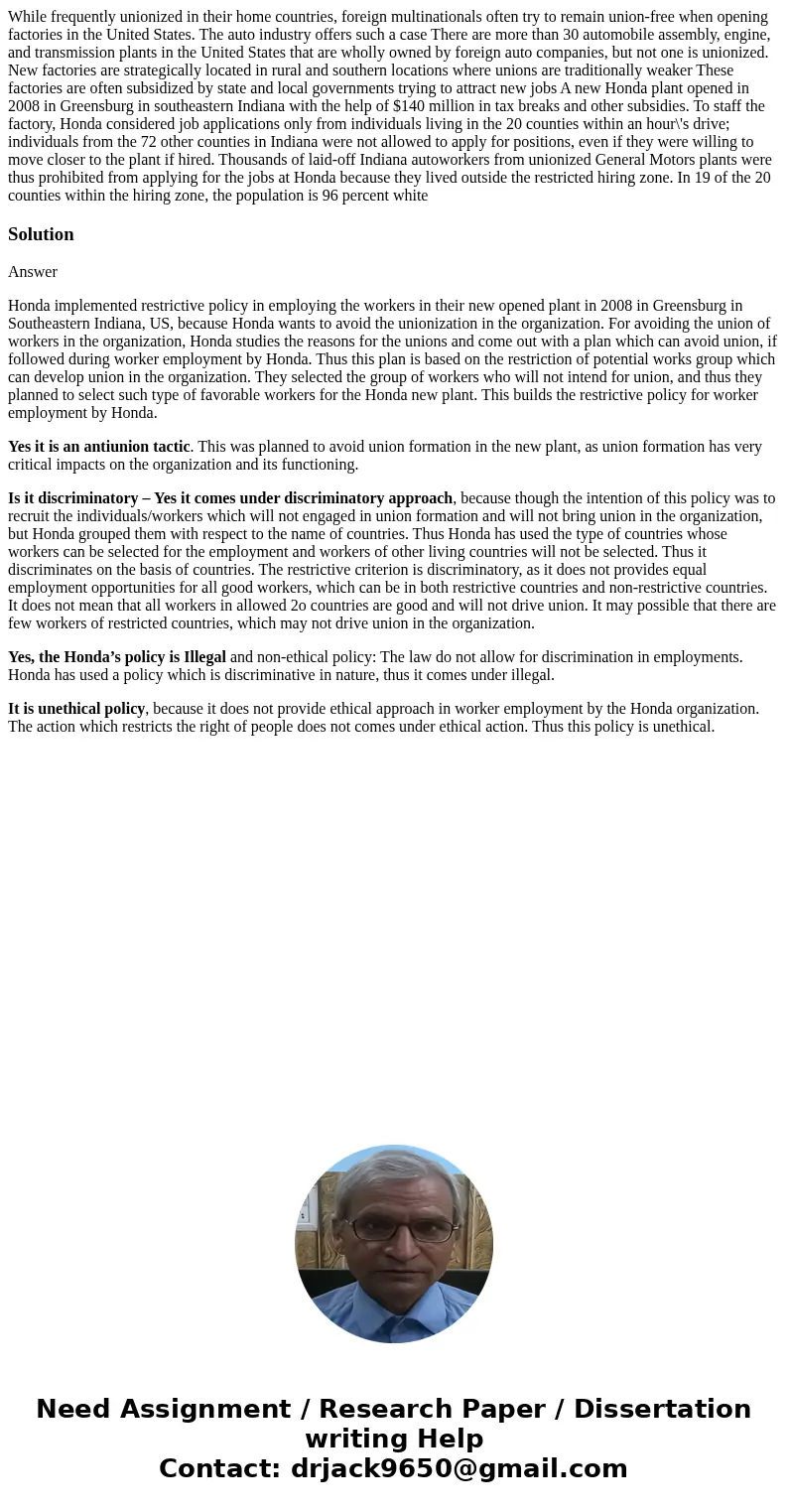While frequently unionized in their home countries foreign m
Solution
Answer
Honda implemented restrictive policy in employing the workers in their new opened plant in 2008 in Greensburg in Southeastern Indiana, US, because Honda wants to avoid the unionization in the organization. For avoiding the union of workers in the organization, Honda studies the reasons for the unions and come out with a plan which can avoid union, if followed during worker employment by Honda. Thus this plan is based on the restriction of potential works group which can develop union in the organization. They selected the group of workers who will not intend for union, and thus they planned to select such type of favorable workers for the Honda new plant. This builds the restrictive policy for worker employment by Honda.
Yes it is an antiunion tactic. This was planned to avoid union formation in the new plant, as union formation has very critical impacts on the organization and its functioning.
Is it discriminatory – Yes it comes under discriminatory approach, because though the intention of this policy was to recruit the individuals/workers which will not engaged in union formation and will not bring union in the organization, but Honda grouped them with respect to the name of countries. Thus Honda has used the type of countries whose workers can be selected for the employment and workers of other living countries will not be selected. Thus it discriminates on the basis of countries. The restrictive criterion is discriminatory, as it does not provides equal employment opportunities for all good workers, which can be in both restrictive countries and non-restrictive countries. It does not mean that all workers in allowed 2o countries are good and will not drive union. It may possible that there are few workers of restricted countries, which may not drive union in the organization.
Yes, the Honda’s policy is Illegal and non-ethical policy: The law do not allow for discrimination in employments. Honda has used a policy which is discriminative in nature, thus it comes under illegal.
It is unethical policy, because it does not provide ethical approach in worker employment by the Honda organization. The action which restricts the right of people does not comes under ethical action. Thus this policy is unethical.

 Homework Sourse
Homework Sourse